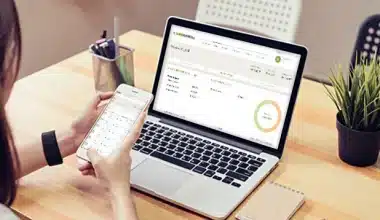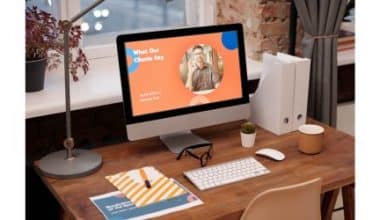Items bought for personal use are referred to as consumer goods, sometimes known as “final” or “consumer products.” Goods sold directly to customers are only for their use; they are not meant to be made or sold again in the future. The majority of consumer goods are offered either online or on store shelves. In this article, we talk about the US Consumer Product Safety Commission including the test of consumer products.
What are Consumer Products?
Consumer goods, often known as “final goods,” are things that people or families purchase for their own use. To put it another way, consumer products are things that the average customer buys for their own use. There are four basic categories of consumer goods, and each of these needs a unique marketing strategy. Understanding the differences between the different types of consumer goods is important for marketing since each type needs a different set of strategies.
For instance, you won’t typically need to spend as much money on marketing and advertising if you’re selling a product that is in high demand. To sell an unpopular product, you’ll need a more aggressive marketing and advertising strategy. So, if you know more about each category of consumer products, you might be better able to market a specific item to the right market, which could lead to more sales.
Furthermore, consumer durables last three years, but some authorities consider one-year products durable. Durable products wear out like capital goods, requiring maintenance. Durable goods include structures, machinery, and equipment. Capital and durable goods also use and take care of themselves in the same way, which makes it hard to tell them apart. Durable goods are the most unpredictable (or cost-dependent) part of consumption because they last longer and cost more, so people put off buying them. Consumer durables include cars, furniture, appliances, and mobile homes.
In addition, non-durable consumer goods that are bought to use right away or almost right away only last from a few minutes to three years. They frequently consist of things like food, beverages, clothes, shoes, and gasoline. Consumer services are intangible things or actions that people often make and do together. Consumer services also include things like haircuts, auto repairs, and landscaping.
Types of Consumer Products
The four consumer product categories that companies most usually sell are as follows:
#1. Convenience Products
A large number of people buy a product that is easy to use and sells well. People often buy convenience goods to meet their needs, and they usually don’t pay much attention to the store where they buy these things.
Convenience items are the most popular type of consumer goods. Since they are usually easy to find, they need to be made in large quantities. Compared to other types of items, they usually require a lot less marketing and promotion.
#2. Specialty Products
Goods that stand out from the crowd or are tied to a certain brand are called “specialty goods.” Customers who buy specialty goods do so carefully and have close relationships with the business that makes or sells them. Specialty goods usually have higher prices than everyday goods. Many customers value buying this kind of product more because of how much they think it’s worth and how much it costs.
In addition, most specialty items are hard to find and are bought much less often than convenience items. Even though reputation and word of mouth can bring in some customers, promotional advertising is still necessary to attract in customers who aren’t experts or very keen.
#3. Shopping Products
People buy shopping items more often than specialty items but less often than easy-to-get items. People usually look at a product’s price, style, and quality before buying it because these things can vary a lot. Shopping items are distributed less frequently than convenience items, therefore, they can be found in fewer locations.
#4.Unsought products
Unwanted goods are those that consumers don’t frequently buy or don’t frequently contemplate buying. Most people who buy things they don’t desire don’t have a plan before making the purchase. A lot of the time, consumers don’t even know about a product until they want to buy it. Most businesses don’t sell things that people don’t want, and their prices can be very different. Many creative and unique products are thought to be useless until more people hear about them. To develop a need for the product and make sure people are aware that it is available, unwanted products usually require far more aggressive advertising and marketing than other sorts of products.
Understanding the Different Types of Consumer Products and Their Importance
It’s important to know if a product works for the convenience of use, shopping, specialization, or to fill a need that hasn’t yet been met. Also, each category requires a unique marketing strategy, as was already mentioned.
For instance, it’s not a good idea to spend a lot of money to promote sugar. Spending money on advertising wouldn’t help change how people think about sugar because there isn’t much difference between brands.
On the other hand, marketing efforts for rejected products would be significant. Most people don’t typically think about becoming customers for life insurance. So, strong marketing and advertising are needed to make consumers aware of unwanted products and convince them to buy them.
US Consumer Product Safety Commission
The Consumer Product Safety Commission (CPSC) protects the public from unwarranted risks of serious injury or death from the thousands of different types of consumer products that fall under its jurisdiction. This also includes products that can hurt children or pose a fire, electrical, chemical, or mechanical hazard. The CPSC can also regulate a wide range of consumer products, including dangerous goods and off-road recreational vehicles with an estimated market value of $1.6 trillion.
Subsequently, after finding a dangerous product, the CPSC gets in touch with the maker or company responsible and sets up voluntary steps to fix the problem. A product recall is typically the best course of action. If a bicycle or baby carriage, for example, had a flaw, the manufacturer might agree to fix it or replace it at the customer’s request. In other cases, the manufacturer might agree to let buyers return the defective items and get a refund. The CPSC also has the power to fine companies that violate laws governing consumer product safety.
Website:
- Consumer Product Safety Commission
- Government recalls
- Report incidents, injuries, or safety concerns
Home Address:
- 4330 East West Hwy.
- Bethesda, MD 20814
Contact:
- Contact the Consumer Product Safety Commission
- Report an Unsafe Product
Phone Number:
1-301-504-7923
Toll Free:
1-800-638-2772 (8:00 AM – 5:30 PM, ET)
Forms:
Consumer Product Safety Commission Forms
Test Consumer Products
Test consumer products are a component of a marketing plan that prioritizes customer pleasure. A customer-in-use test is a tool for evaluating the performance of a product. This kind of test can also tell us how people act, which we can use to make products that are easy to use (easy to understand and useful to the customer). That is to say, before a product hits the market, consumers test it out.
Typically, it lets people directly see how they feel about the product and gives them information about how they use it every day, like the value of the package, the amount of product they use every day, and how they feel about the product’s many sensory elements.
Why Conduct Test Consumer Products?
You need data to assist you in making decisions, whether you want to test different versions of a product, change an existing product, or test an existing product with a new group of users.
In other words, this necessitates the testing of consumer products. Product testing also enables you to determine whether your product is reliable and adaptable enough to succeed in real-world situations. Thus, business decisions can be based on both quantitative and qualitative data.
Different Types of Product Testing Designs
There are numerous original study designs for product testing that can be used. The design you choose will also depend on a number of factors, including the number of items you intend to test, your budget, your research goal, and the schedule.
Protomonadic Testing
Combining sequential and monadic testing designs results in proto-monadic testing. In other words, the respondent must evaluate each of the two products independently. Only after the respondent has assessed both products is their preference for each one determined.
Sequential Monadic Testing
Respondents can choose to rate two or more products in sequential monadic testing. This is a great design choice if you’re trying to grasp subtle distinctions or variations in a product. Nevertheless, you should be aware that order bias may enter your research because respondents will view many products.
Paired-Comparison Testing
In a paired-comparison test, a respondent is shown two products at once and asked which one they prefer.
Monadic Testing
In a monadic test, people are only vulnerable to one product at a time. The product is then assessed independently of all other products. This design has the advantage of allowing input to be supplied without being influenced by other objects or stimuli. Additionally, it prevents the object from being compared to other makes, models, or variations.
Environments for Consumer Goods Testing
As crucial to the success of your consumer product testing as the study’s actual design could be your choice of a testing environment. There are three places where products can be done
Central Location Testing (CLT)
The central location testing method of qualitative research entails bringing respondents to a site to take part in testing.
Street Intercept Testing (SIT)
Street intercept testing is another qualitative research technique in which participants are enlisted and invited to take part in public settings such as busy streets, malls, etc. Simple research works well in this situation.
In-Home Usage Testing (IHUT)
Participants use the products in the comfort of their homes during in-home usability testing. A follow-up is carried out by phone, in person, or online after the delivery of the products to respondents’ residences for review (online survey, message board, diary, or focus group).
What are the 4 Test Consumer Products?
4 types of consumer products include:
- Shopping products.
- Specialty products.
- Convenience products.
- Unsought products.
What are 5 Examples of Consumer Goods?
These frequently include things like meals, drinks, clothes, shoes, and gasoline. Intangible goods or acts known as consumer services are generally produced and consumed concurrently.
What are 5 Examples of Products?
Examples of products:
- Toothpaste.
- Food.
- Magazine
- Candy.
- Dishwasher detergent.
- Shampoo
What Does Test Consumer Products Mean?
Any item created or disseminated with the intention of being sold to a customer and used, consumed, or enjoyed by that consumer is referred to as a consumer product. Products that are often designed primarily for business, commerce, or industry usage are not included in the phrase.
What is the Classification of Consumer Products?
Consumer products can be categorized as service, nondurable, or durable. Consumer goods are marketed according to their kind, such as convenience products or specialist items, and are classed according to consumer behavior.
What are the 3 Type of Consumers?
Omnivores, carnivores, herbivores, and decomposers are the four different categories of consumers. Living things called herbivores solely consume plants for nourishment and energy. Herbivores include creatures like whales, elephants, cows, pigs, rabbits, and horses. Living organisms classified as carnivores only consume meat.
What are the Features of Consumer Products?
- Large-scale production of consumer items is carried out.
- There are many buyers and sellers in the market for consumer goods.
- There are numerous perfect or comparable replacements for every product.
- Price differences between the many accessible replacements will exist.
What are the three Levels of Products?
According to Kotler, there are three categories of products: core product, actual products, and augmented products. The benefit that the product provides to the consumer is referred to as the core product.”
References
- emi-rs.com
- usa.gov
- gao.gov
- corporatefinanceinstitute.com
- indeed.com
Related Articles
- PRODUCT DEVELOPMENT PROCESS: What Are The Steps Involved?
- HOW TO GET STARTED IN REAL ESTATE: Step-by-Step Guide on How to Start Your Own Real Estate Business in 2022
- TEST MARKETING: Best Practices to Scale any Business (+ Helpful Reviews)
- FEDERAL LAWS THAT PROTECT EMPLOYEES: Why Your Boss Cant Mistreat You
- TEST CASE MANAGEMENT TOOLS: Meaning, Top, and Best Test Case Management Tools






